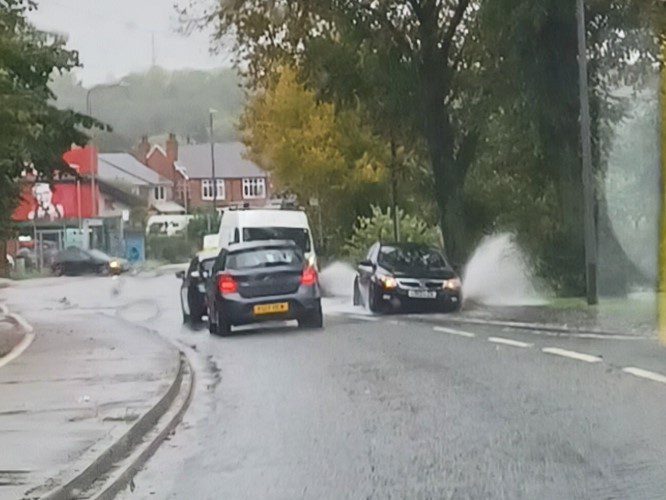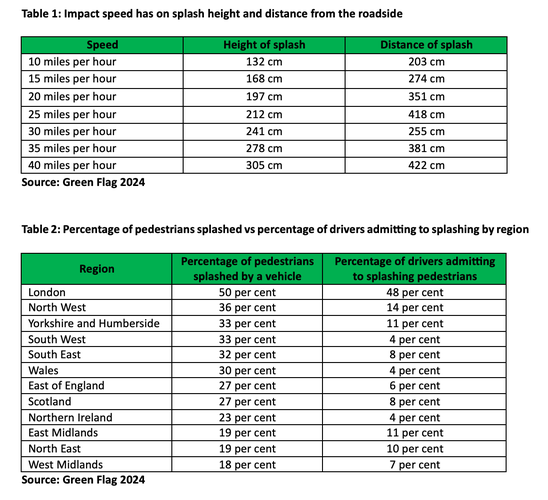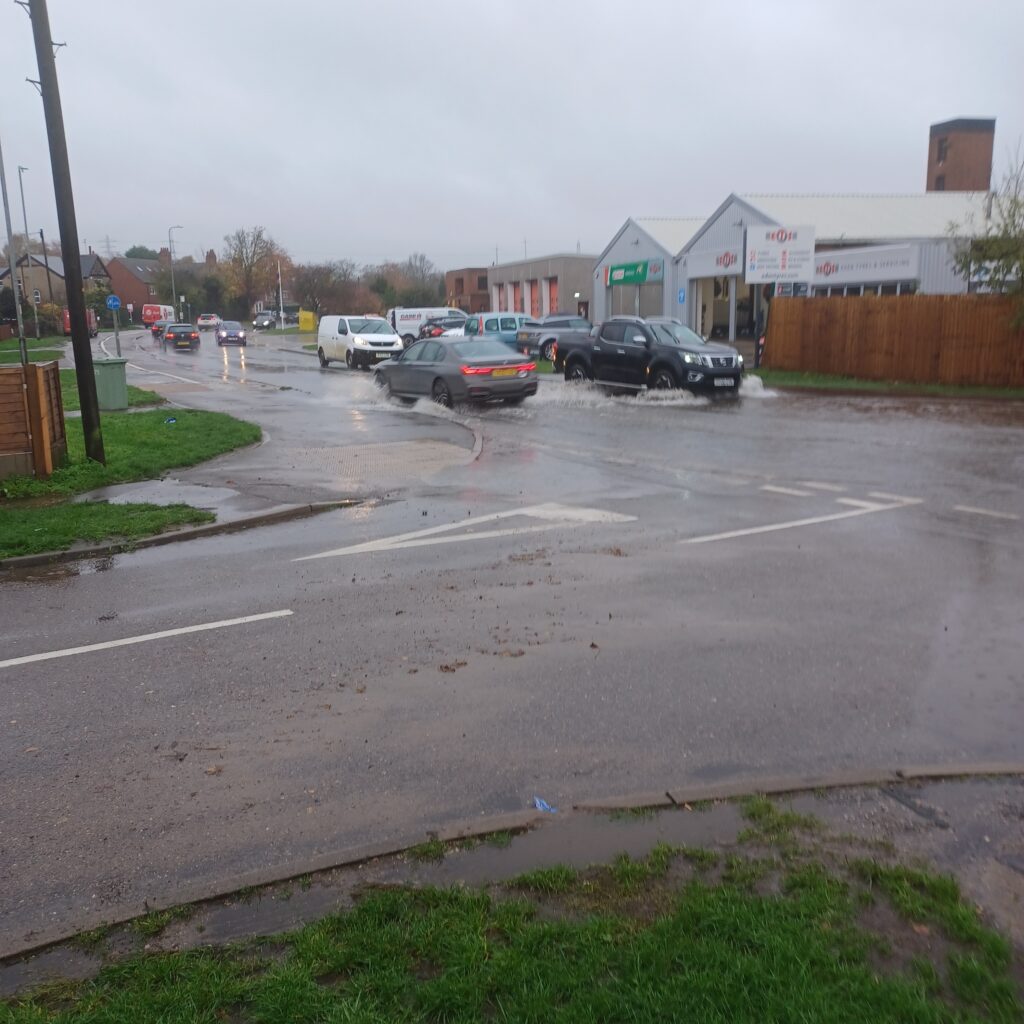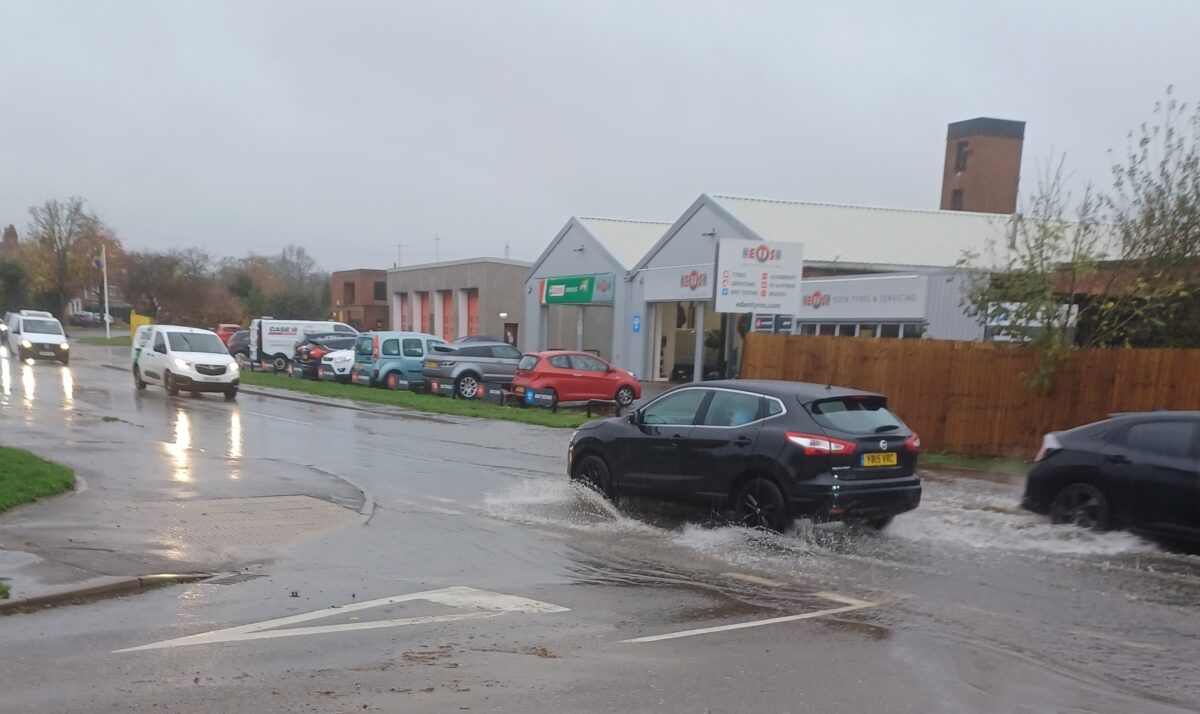

• Scientific ‘Green Flag Splash Test’ reveals a car travelling through a puddle at 40mph shoots water over four meters wide and more than three meters high
• 16.6 million (31 per cent) Brits have been splashed by a vehicle when walking next to a road in the last year
• London is the splashing hotspot, with half of drivers admitting to soaking pedestrians followed by the North West and Yorkshire and Humberside
As the UK continues to be soaked by spring showers Brits are being warned to watch out for puddles on the road. New research from Green Flag, one of the UK’s leading breakdown providers, reveals 16.6 million (31 per cent)1 pedestrians have been splashed by a passing vehicle in the last year.
To better understand the correlation between speed and the ‘splash radius’ of a puddle, Green Flag undertook a scientific Splash Test2. Green Flag’s experiment identified that a car travelling through a puddle at 40 miles per hour creates a splash 3.05 metres high, that’s 20 centimetres higher than a typical bus shelter, and the splash will soak people up to 4.22 metres away. The average pavement in the UK is less than three metres wide3 meaning pedestrians simply cannot avoid a car splashing them when driving through a puddle at anything over 20 mph. With average heights for men and women being 175.9cm and 162.4cm4 respectively, it is not surprising that people are being left completely drenched by vehicles driving through even shallow puddles under 10cm in depth.

Table 1: Impact speed has on splash height and distance from the roadside
The Road Traffic Act 19845 states if a person drives a vehicle on the road without reasonable consideration for the other persons using the road or place, they would be guilty of careless and inconsiderate driving. The fine for splashing pedestrians, which is classed as careless and inconsiderate driving, is typically £100 and three penalty points. However, if the driver’s behaviour has been found to be an act of incompetence, selfishness, impatience or aggressiveness4, this could increase to a maximum fine of £5,000.
Unsurprisingly, Brits do not respond well to being splashed. Rude gestures (32 per cent) and yelling at the driver (31 per cent) are the most common reactions, with nine per cent saying that they would try to report the driver to the police. Nearly two million (4 per cent) would also ask the driver to pay for dry cleaning if they were splashed. However, this may be hard to achieve, as just nine per cent of those who were splashed said the driver stopped to help them.
Katie Lomas, Managing Director of Green Flag, commented: “It is incredibly inconsiderate to splash a pedestrian by speeding through puddles. Our research shows that speed has a considerable impact on the splash radius of a puddle, showing the importance of slowing down when driving through them, or if it is safe to do so avoiding them altogether, especially when there are pedestrians nearby. Drivers should always take extra care when there is water on the road as it can cause accidents and damage to their vehicle.”
Alongside speeding drivers, a rise in blocked drains and gullies could be increasing the number of puddles on roads, resulting in more pedestrians being splashed. A review of council data7 reveals a 35 per cent jump in reports of blocked drains and gullies to local authorities between 2021 and 2023 (60,633 – 81,813 respectively). The amount councils spent unblocking them rose by 16 per cent over the same period (£16,091,840 – £18,745,233 respectively).

Regional findings:
While City dwellers do not always have a reputation for being the most helpful, those in London were the most likely to be helped someone they splashed (51 per cent) compared to Wales, where just three per cent of those splashed were assisted.
London also took the top spot for the location where pedestrians were most splashed in the last year (50 per cent), followed by the Northwest (36 per cent) and Yorkshire and the Humberside
Humberside (33 per cent). Drivers in the capital also admitted to splashing pedestrians more than in any other region.
Table 2: Percentage of pedestrians splashed vs percentage of drivers admitting to splashing by region
Just 13 per cent of drivers claimed that they would stop completely to avoid splashing someone and a further 28 per cent said they would try to swerve round a puddle to avoid a splash. Almost four million (11 per cent) drivers claim to have crashed or nearly crashed trying to avoid a puddle.





Leave a Reply
You must be logged in to post a comment.